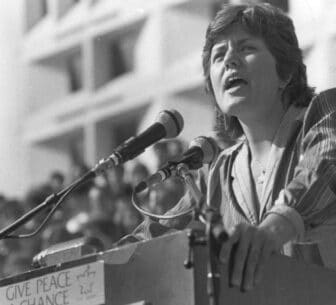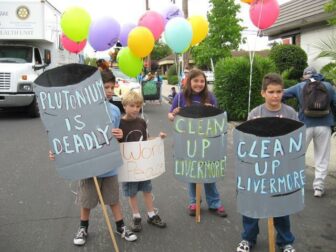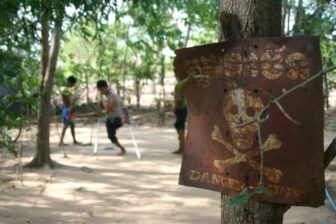Disarmament Grantmaking
Table of Contents
We began grantmaking in the area of disarmament in 1986, initially by supporting think tanks working to build arms control consensus among national and international governments and agencies. An early grantee was the Institute for Defense and Disarmament Studies (IDDS), a U.S. policy and research center founded and headed by Randall Forsberg, who—unlike most of our grantees—had already established herself as a widely recognized force in her field when we began our collaboration.

(Lionel Delevingne)
An arms control expert who helped found and lead the vast and extraordinarily influential nuclear-freeze movement of the early 1980s, Forsberg championed creative approaches to global security based on long-term, methodical reductions in offensive capability. Her concept of “alternative defense,” which is said to have played a role in Soviet leader Mikhail Gorbachev’s embrace of a bilateral, no-first-strike policy, envisioned an international drawdown of nuclear arsenals to a level sufficient only for defensive purposes.
Following two years of support for the Institute, our disarmament program broadened in 1988 to include funding for policy advocates focused specifically on reducing the size of nuclear weapon arsenals among all nuclear-capable countries. These grants targeted projects with goals ranging from worldwide nuclear nonproliferation and disarmament to tightened control of fissile materials in order to prevent nuclear accidents or acts of terrorism. Among our main grantees in this period were the Carnegie Endowment for International Peace, the Monterey Institute of International Studies, the Nuclear Control Institute, and the Wisconsin Project on Nuclear Arms Control.
Funding also went to citizen monitoring and organizing at U.S. Department of Energy (DOE) nuclear weapons production sites, work that was spearheaded not by policy advocates but, instead, by grassroots antinuclear and disarmament groups. A notable accomplishment to emerge from their efforts was a 1999 legal settlement stemming from a lawsuit brought against DOE by 39 organizations, several of our grantees among them. The settlement, a major victory for local citizens and organizations, required increased public oversight of DOE handling of the radioactive and toxic legacy of nuclear weapons production.

(Tri-Valley CAREs)
Grassroots groups excelled at weapons-production advocacy in part because of their success in spotlighting groundwater pollution and other important public health threats posed by weapons production. Among our most active grantees in this work were Citizen Alert in Nevada, Snake River Alliance in Idaho, and Tri-Valley Communities Against a Radioactive Environment (Tri-Valley CAREs) in California. Each of these groups focused on a local nuclear weapons plant, educating citizens and organizing them to hold the facilities responsible for contamination.
Our disarmament grantmaking also supported the public education efforts of advocates favoring an international ban on the stockpiling, transfer, and use of anti-personnel landmines. These education efforts helped set the stage for the Ottawa Treaty (formally, the Convention on the Prohibition of the Use, Stockpiling, Production and Transfer of Anti-Personnel Mines and on their Destruction), which was adopted in 1997 and took effect two years later.

(iStockphoto/trakholidays)
We discontinued our disarmament program in 2001 as part of a program reorganization that significantly expanded our environmental grantmaking. Although our board was impressed by our disarmament grantees’ contributions, we concluded that at the outset of the 2000s, a foundation of our size had a greater opportunity to spur change in the environmental arena than to influence national governments’ nuclear policy decisions. Nevertheless, our environmental grants for five years did include ongoing funding of grassroots groups working to curb production at nuclear weapons plants.
JMF Grants 1987-2001: Disarmament

Total $ Amount
$16,522,828
Years of Program
1987-2001
# of Grants
482
